To facilitate the transition from school to…
Planning for the transition from school to an active working life calls for a coordinated and planned process of activities integrated into the student’s Individualized Education Plan (IEP) and Individualized Intersectoral Service Plan (PSII). It aims to provide support during the transition from school to other activities (employment and socio-professional life, continuing education, post-secondary studies, leisure, transport, housing, etc.).
Who is this for?
- This is addressed to students who require a concerted and planned support process to ensure a harmonious transition to an active adult life, particularly but not exclusively, for disabled students or those with difficulties.
- The planning of the transition must be constructed according to the student’s objectives regarding their adult life and is done in collaboration with identified partners to help achieve their goals.
When does the TEVA – TSAL process begin?
- The age when the process of planning the TEVA begins varies according to the student’s needs and the programs they are following. Planning activities can intensify according to the preparation for a choice of school path or proximity to them leaving the school network. The transition from first to second cycle of secondary is a moment when the choices of path have important consequences on the student’s future. The three years preceding their predicted exit from the school network are especially important in the transition planning process.
Inspired by:
- La planification de la transition de l’école vers la vie active (TÉVA), MELS, 2010
- Cadre de référence, Engagement commun des partenaires concernés par la mise en place d’une démarche de transition de l’école à la vie active (TÉVA), Document approved by the Comité régional Transition école-vie active (TÉVA), région Laurentides
The student and other partners can be involved in the process:
- Parents
- School staff
- Service centre staff, and personnel in physical and intellectual rehabilitation centres
- Centre Jeunesse personnel
- Representatives of local Emploi-Québec centres
- Community organizations
The school is invited to identify their partners in the process.
The planning of a transition from school to active life must be built according to the young person’s life plan and goals. The contributions and joint efforts of various partners are essential to a successful transition and the achievement of their plan.
Some examples
- Use different tools and means to understand the student’s socio-professional interests.
- Plan activities to inform parents about different programs and resources that can help their child in their process.
- Structure the path of transition from school to active life by defined stages, ensuring the necessary resources (material, human, etc.).
- Develop a local bank of activities or collaborative resources.
To encourage the well-being of students and contribute to their harmonious integration into society.
To respond to the needs of the student for whom a TEVA process is deemed necessary. To permit different networks involved with students to collaborate and explore with all partners, different actions to take for the future of students, and to link these interventions in terms of continuity and complementarity of services.
In this sense, the Quebec government is committed
- via the Stratégie d’action jeunesse 2009-2014 to encourage transition to active life and keep them employed.
- via the National strategy for labour market integration and maintenance of handicapped persons to better support, since 2008 the planning of the transition from school to active living.
- via the policy “Equals in Every Respect: Because rights are meant to be exercised” to increase the access, complementarity and coordination of programs and services.
In this sense, this process brings together
- Guidelines of the Quebec Education Program, notably the Work-Oriented Training Pathway.
- The I care about school! – All together for student success action strategy.
- School adaptation policy.
- MEES/MSSS complementarity of services agreement.
- guidance counselling approach.
because the process is part of the student’s Individualized Education Plan.
For some students, particular attention must be paid to the transition from school to active life. To facilitate and assure harmonious passage of the student towards this next step in their development, more long-term planning must be envisaged in the Individualized Education Plan.
This planning is part of a multi-sectorial approach and addresses different elements of social and professional integration once they leave school: work, recreation, transport, etc. It is integral to the service plan and Individualized Education Plan. (Reference Framework for the Establishment of Individualized Education Plans)
- Quebec Education Act(obliges the elaboration of an Individualized Education Plan)
- Act to secure handicapped persons in the exercise of their rights with a view to achieving social, school and workplace integration
- Act respecting health services and social services
- Individualized Education Plans: Helping Students Achieve Success
- Ministry policy on special education
